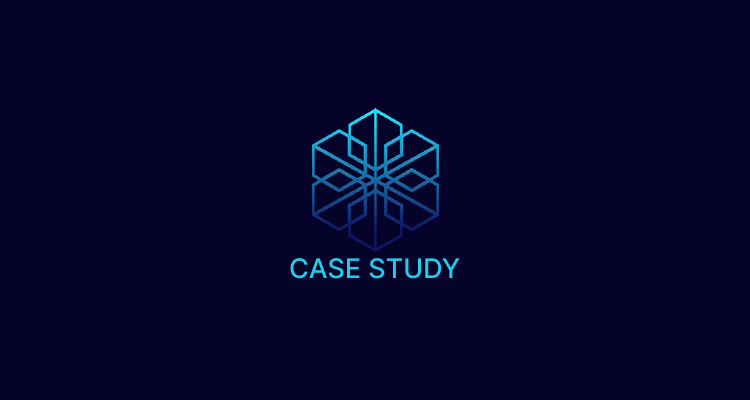Overview: Schneider Electric, a global leader in energy management and automation solutions, operates a highly complex supply chain spanning multiple continents. With an extensive product portfolio serving industries such as energy, infrastructure, data centers, and industrial automation, Schneider Electric faces challenges ranging from supply chain disruptions to stringent sustainability requirements. By deploying Sinansys, an advanced AI and blockchain-powered platform, Schneider Electric achieved greater supply chain visibility, enhanced operational efficiency, and advanced its sustainability initiatives.
Challenges: Schneider Electric’s operations presented several critical supply chain challenges:
- Global Supply Chain Complexity:
- Managing a diverse supplier network across various regions and industries required end-to-end visibility and seamless coordination.
- Logistics inefficiencies and delayed shipments disrupted manufacturing and delivery schedules.
- Material Shortages:
- Semiconductor and critical electronic component shortages created bottlenecks in production and delayed product delivery.
- Sustainability Compliance:
- Increasing pressure to comply with global sustainability regulations, including EU’s CBAM (Carbon Border Adjustment Mechanism) and CSRD (Corporate Sustainability Reporting Directive), required accurate emissions tracking.
- Demand Volatility:
- Fluctuations in demand for energy management solutions driven by renewable energy transitions and industrial automation trends created challenges in inventory and capacity planning.
- Geopolitical Risks:
- Trade tensions and geopolitical events disrupted global supply chains and increased transportation costs.
How Sinansys Helped: Sinansys provided Schneider Electric with advanced capabilities to address these challenges and transform its supply chain operations:
- End-to-End Supply Chain Visibility:
- Blockchain-enabled transparency tracked raw materials, supplier performance, and shipments in real time.
- Enhanced visibility improved coordination across suppliers, manufacturing facilities, and distribution networks, reducing delays and inefficiencies.
- Predictive Analytics for Material Shortages:
- AI-driven models forecasted shortages of semiconductors and other critical components, enabling proactive sourcing and mitigating production bottlenecks.
- Alternative supplier recommendations minimized dependency on single sources.
- Sustainability Tracking and Optimization:
- Sinansys’ emissions tracking tools monitored carbon footprints across Schneider Electric’s supply chain, ensuring compliance with CBAM and CSRD regulations.
- Optimized transportation routes reduced emissions by 12%, supporting the company’s commitment to achieving net-zero operations.
- Demand Forecasting and Inventory Management:
- Advanced analytics improved demand forecasting accuracy, enabling better alignment between inventory levels and market demand.
- Dynamic inventory management reduced overstocking and minimized lead times.
- Risk Management:
- Real-time risk assessment tools identified vulnerabilities in supply chains, allowing Schneider Electric to implement contingency plans and maintain operational continuity during disruptions.
Results and Benefits:
- Enhanced Supply Chain Efficiency:
- Real-time visibility and predictive analytics reduced operational inefficiencies, saving $40 million annually in logistics and procurement costs.
- Reduced Disruptions:
- Proactive risk management and material sourcing mitigated supply chain disruptions, preserving $60 million in revenue annually.
- Improved Sustainability Compliance:
- Emissions tracking and optimized logistics contributed to $15 million in regulatory compliance savings and sustainability-driven incentives.
- Increased Customer Satisfaction:
- On-time delivery improvements and product availability boosted customer satisfaction, generating an additional $30 million in revenue.
- Strengthened Resilience:
- Enhanced supply chain agility positioned Schneider Electric to navigate geopolitical risks and future disruptions, creating long-term value estimated at $50 million annually.
Total Financial Benefits:
- The combined financial benefits, including cost savings, revenue preservation, and sustainability gains, amounted to $195 million annually.
Conclusion: Schneider Electric’s deployment of Sinansys demonstrates the critical importance of advanced supply chain management technologies in the energy and automation sector. By leveraging blockchain transparency, predictive analytics, and sustainability tracking, Schneider Electric optimized its operations, minimized disruptions, and aligned with global sustainability goals. This case study highlights how Sinansys enabled Schneider Electric to build a resilient and efficient supply chain while driving financial and operational success.
*Disclaimer - This case study is for informational and illustrative purposes only. It is based on publicly available data, industry trends, and hypothetical scenarios rather than direct experience or engagement with the business described. Any insights, strategies, or recommendations provided do not reflect confidential or proprietary knowledge of the company and should not be interpreted as an endorsement or formal association. Readers should conduct their own research and due diligence before making any business decisions based on the content of this case study.
